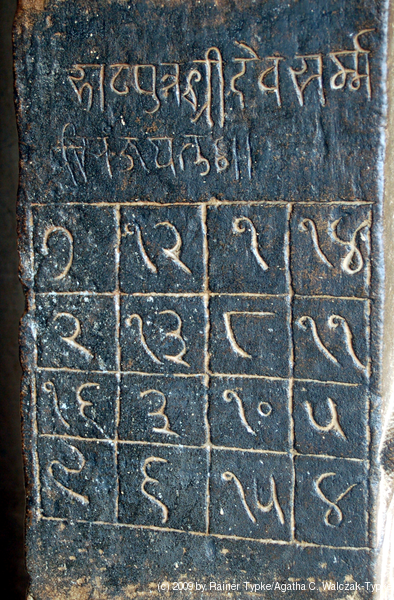Mark Dominus (陶敏修)
mjd@pobox.com

Archive:
| 2025: | JFMAMJ |
| JAS | |
| 2024: | JFMAMJ |
| JASOND | |
| 2023: | JFMAMJ |
| JASOND | |
| 2022: | JFMAMJ |
| JASOND | |
| 2021: | JFMAMJ |
| JASOND | |
| 2020: | JFMAMJ |
| JASOND | |
| 2019: | JFMAMJ |
| JASOND | |
| 2018: | JFMAMJ |
| JASOND | |
| 2017: | JFMAMJ |
| JASOND | |
| 2016: | JFMAMJ |
| JASOND | |
| 2015: | JFMAMJ |
| JASOND | |
| 2014: | JFMAMJ |
| JASOND | |
| 2013: | JFMAMJ |
| JASOND | |
| 2012: | JFMAMJ |
| JASOND | |
| 2011: | JFMAMJ |
| JASOND | |
| 2010: | JFMAMJ |
| JASOND | |
| 2009: | JFMAMJ |
| JASOND | |
| 2008: | JFMAMJ |
| JASOND | |
| 2007: | JFMAMJ |
| JASOND | |
| 2006: | JFMAMJ |
| JASOND | |
| 2005: | OND |
Subtopics:
| Mathematics | 245 |
| Programming | 99 |
| Language | 95 |
| Miscellaneous | 75 |
| Book | 50 |
| Tech | 49 |
| Etymology | 35 |
| Haskell | 33 |
| Oops | 30 |
| Unix | 27 |
| Cosmic Call | 25 |
| Math SE | 25 |
| Law | 22 |
| Physics | 21 |
| Perl | 17 |
| Biology | 16 |
| Brain | 15 |
| Calendar | 15 |
| Food | 15 |
Comments disabled
Thu, 15 Dec 2016
Let's decipher a thousand-year-old magic square
The Parshvanatha temple in Madhya Pradesh, India was built around 1,050 years ago. Carved at its entrance is this magic square:

The digit signs have changed in the past thousand years, but it's a quick and fun puzzle to figure out what they mean using only the information that this is, in fact, a magic square.
A solution follows. No peeking until you've tried it yourself!
There are 9 one-digit entries









and 7 two-digit entries







so we can guess
that the entries are the numbers 1 through 16, as is usual, and the
magic sum is 34. The  appears in the
same position in all the two-digit numbers, so it's the digit 1. The
other digit of the numeral
appears in the
same position in all the two-digit numbers, so it's the digit 1. The
other digit of the numeral  is
is  , and this must be zero. If it were
otherwise, it would appear on its own, as does for example the
, and this must be zero. If it were
otherwise, it would appear on its own, as does for example the
 from
from  or the
or the
 from
from  .
.
It is tempting to imagine that  is 4.
But we can see it's not so. Adding up the rightmost column, we get
is 4.
But we can see it's not so. Adding up the rightmost column, we get
 +
+  +
+  +
+  =
=
 + 11 +
+ 11 +  +
+  =
=
(10 +  ) + 11 +
) + 11 +  +
+  = 34,
= 34,
so that  must be an odd number. We
know it isn't 1 (because
must be an odd number. We
know it isn't 1 (because  is 1), and it
can't be 7 or 9 because
is 1), and it
can't be 7 or 9 because  appears in the
bottom row and there is no 17 or 19. So
appears in the
bottom row and there is no 17 or 19. So  must be 3 or 5.
must be 3 or 5.
Now if  were 3, then
were 3, then  would be 13, and the third column would be
would be 13, and the third column would be
 +
+  +
+  +
+  =
=
1 +  + 10 + 13 = 34,
+ 10 + 13 = 34,
and then  would be 10, which is too big. So
would be 10, which is too big. So  must be 5, and this means that
must be 5, and this means that  is 4 and
is 4 and  is 8.
(
is 8.
( appears only a as a single-digit
numeral, which is consistent with it being 8.)
appears only a as a single-digit
numeral, which is consistent with it being 8.)
The top row has
 +
+  +
+  +
+  =
=
 +
+  + 1 + 14 =
+ 1 + 14 =
 + (10 +
+ (10 +  ) + 1 + 14 = 34
) + 1 + 14 = 34
so that  +
+  = 9.
= 9.  only appears as a single digit and
we already used 8 so
only appears as a single digit and
we already used 8 so  must be 7 or 9.
But 9 is too big, so it must be 7, and then
must be 7 or 9.
But 9 is too big, so it must be 7, and then  is 2.
is 2.
 is the only remaining unknown single-digit
numeral, and we already know 7 and 8, so
is the only remaining unknown single-digit
numeral, and we already know 7 and 8, so
 is 9. The leftmost column tells us
that
is 9. The leftmost column tells us
that  is 16, and the last two entries,
is 16, and the last two entries,
 and
and  are
easily discovered to be 13 and 3. The decoded square is:
are
easily discovered to be 13 and 3. The decoded square is:
|
|
I like that people look at the right-hand column and immediately see 18 + 11 + 4 + 8 but it's actually 14 + 11 + 5 + 4.
This is an extra-special magic square: not only do the ten rows, columns, and diagonals all add up to 34, so do all the four-cell subsquares, so do any four squares arranged symmetrically about the center, and so do all the broken diagonals that you get by wrapping around at the edges.
[ Addendum: It has come to my attention that the digit symbols in the magic square are not too different from the current forms of the digit symbols in the Gujarati script. ]
[ Addendum 20161217: The temple is not very close to Gujarat or to the area in which Gujarati is common, so I guess that the digit symbols in Indian languages have evolved in the past thousand years, with the Gujarati versions remaining closest to the ancient forms, or else perhaps Gujarati was spoken more widely a thousand years ago. I would be interested to hear about this from someone who knows. ]
[ Addendum 20170130: Shreevatsa R. has contributed a detailed discussion of the history of the digit symbols. ]
[Other articles in category /math] permanent link


